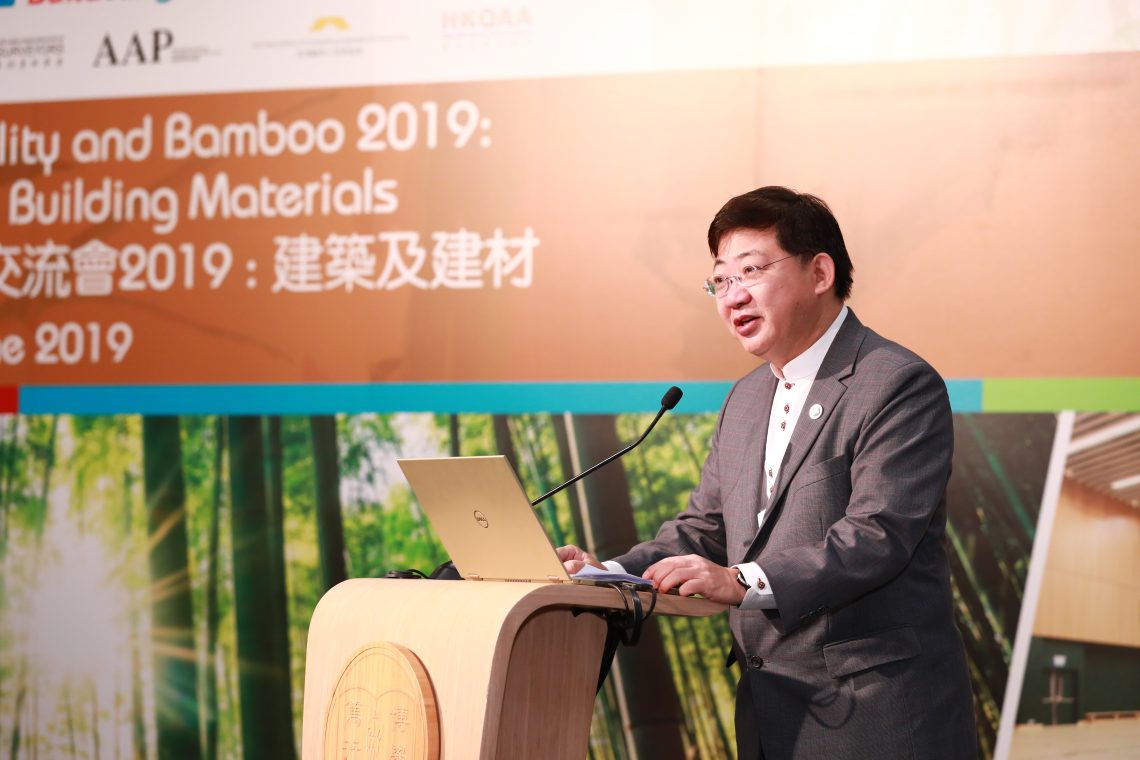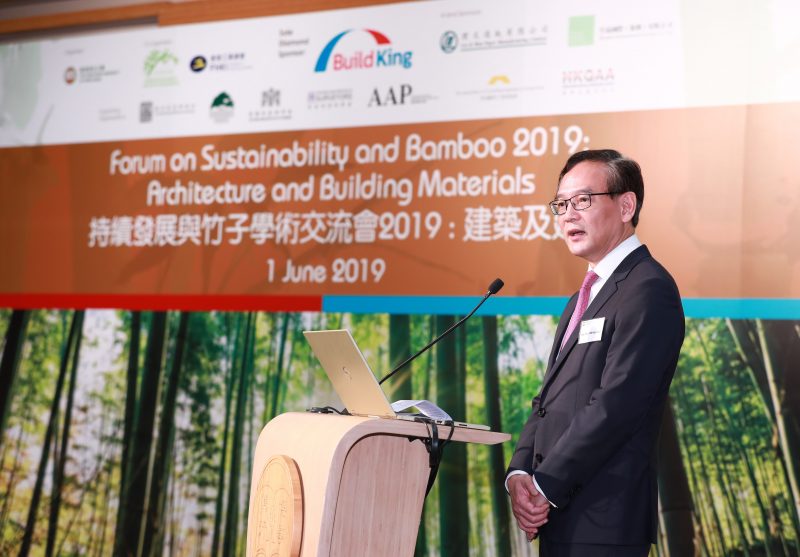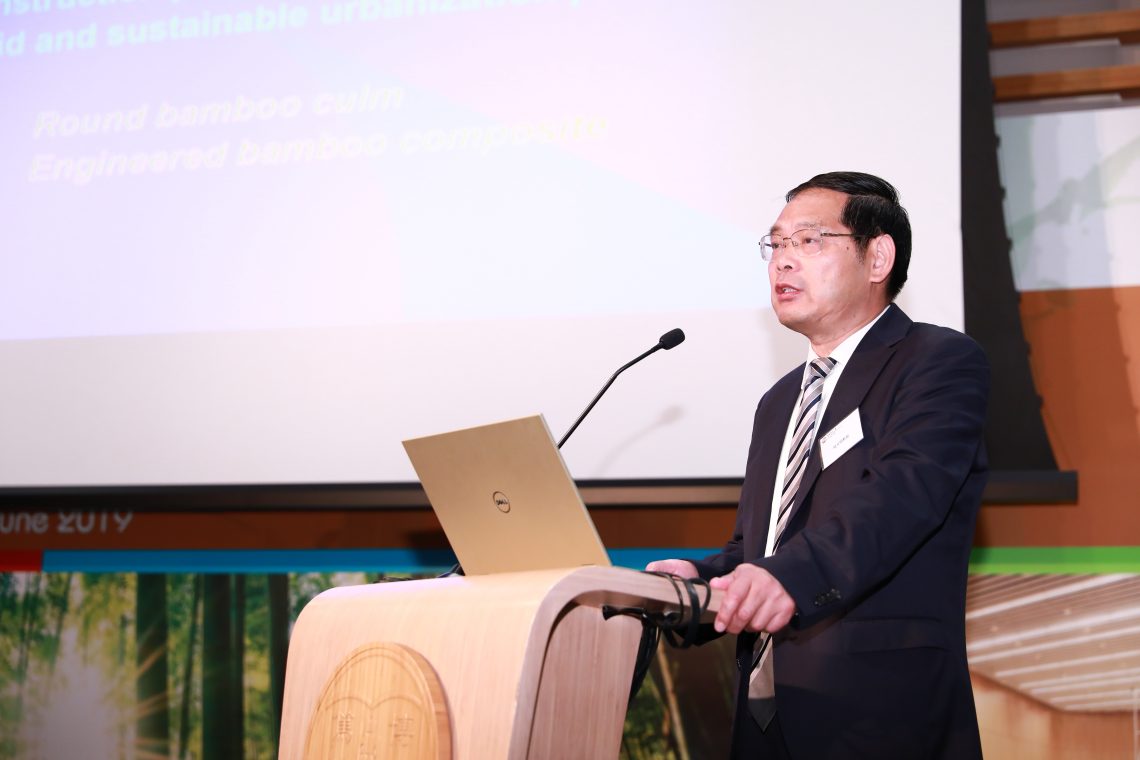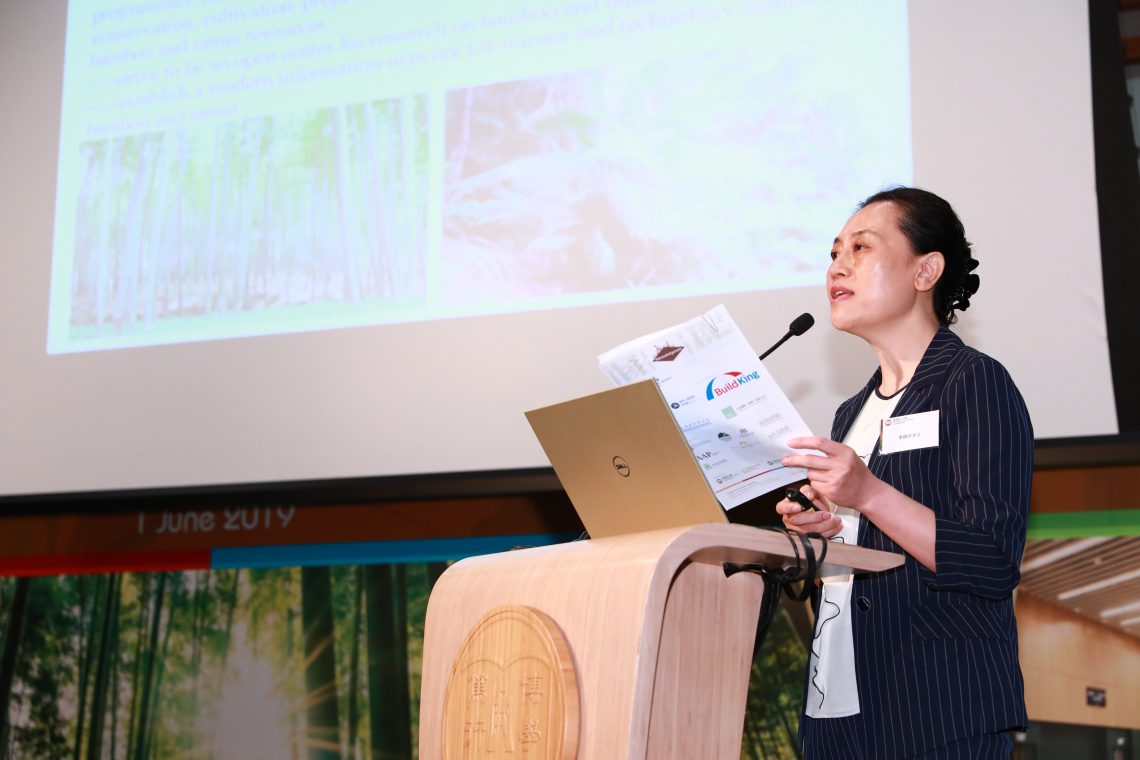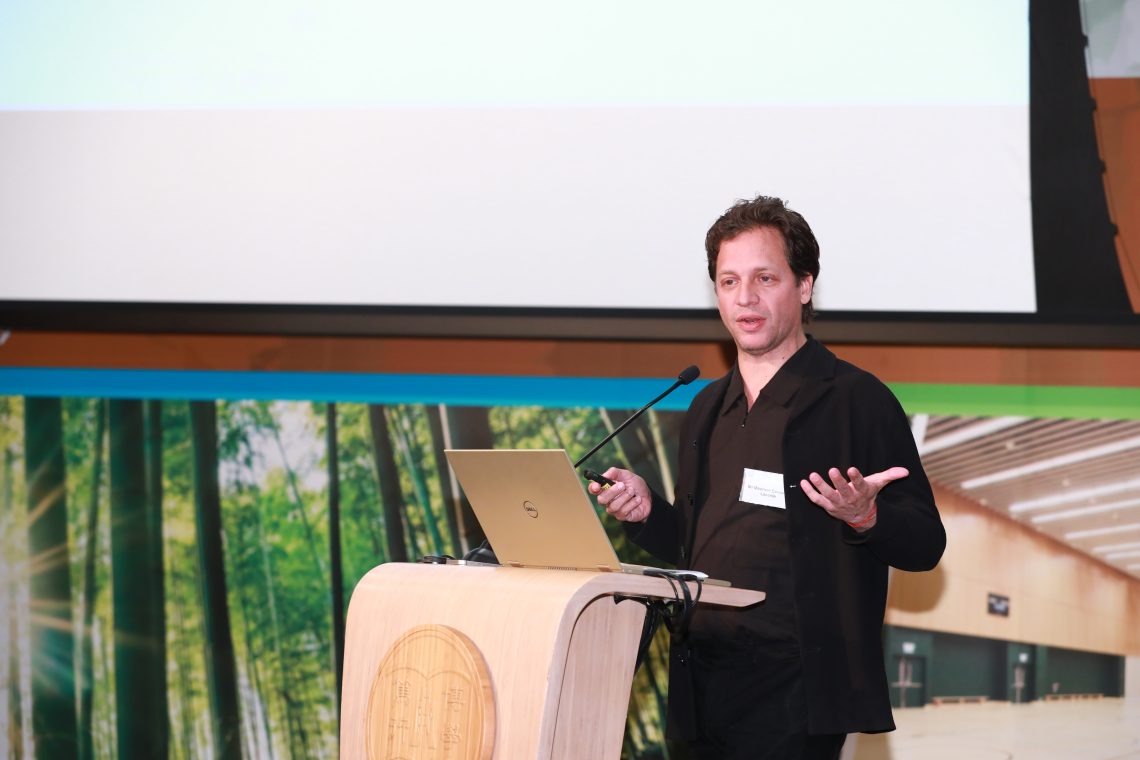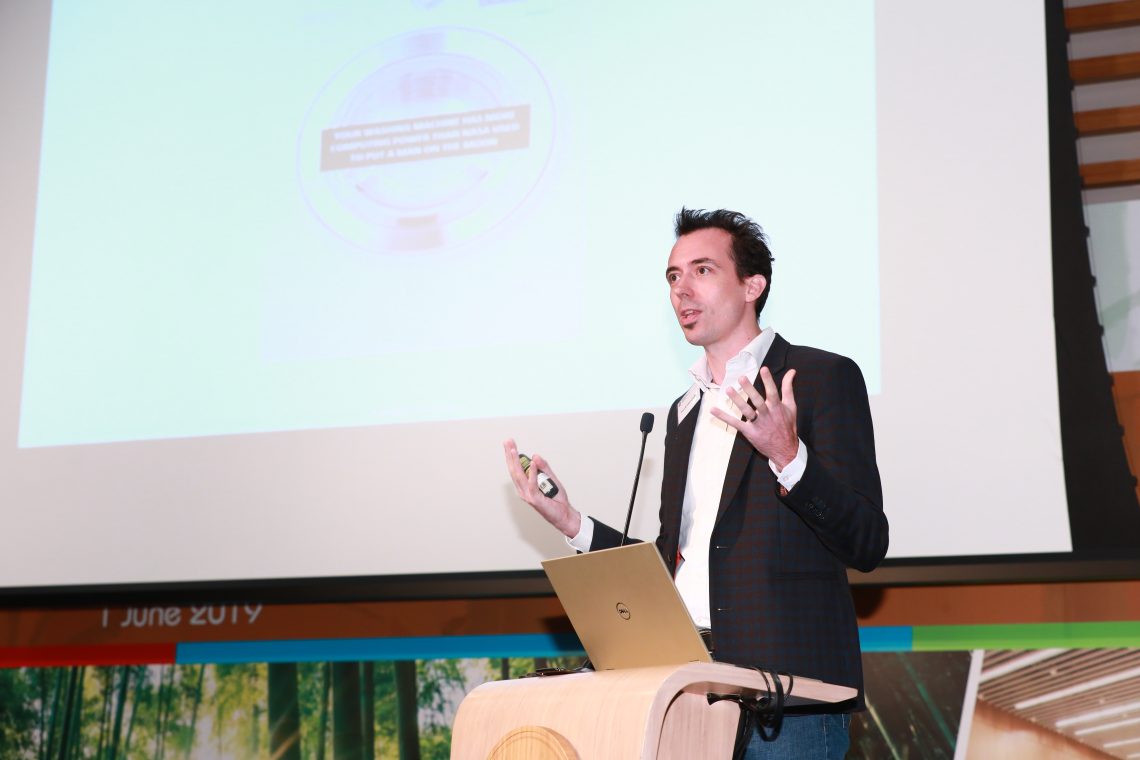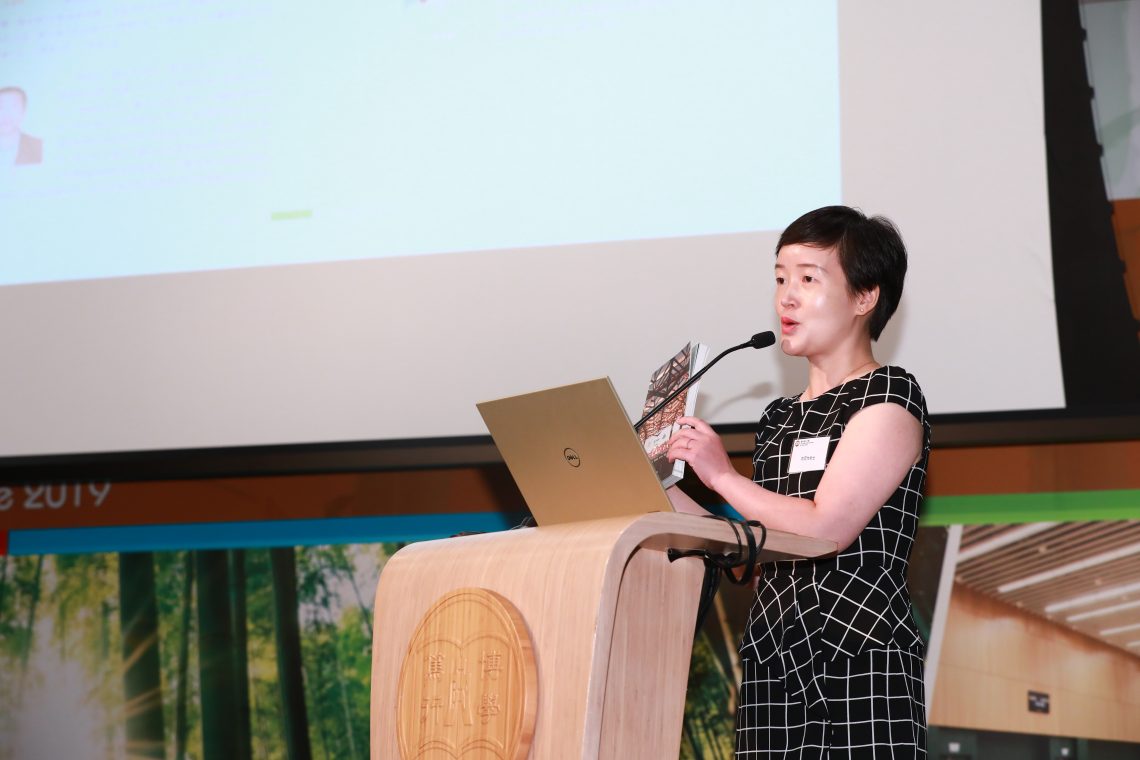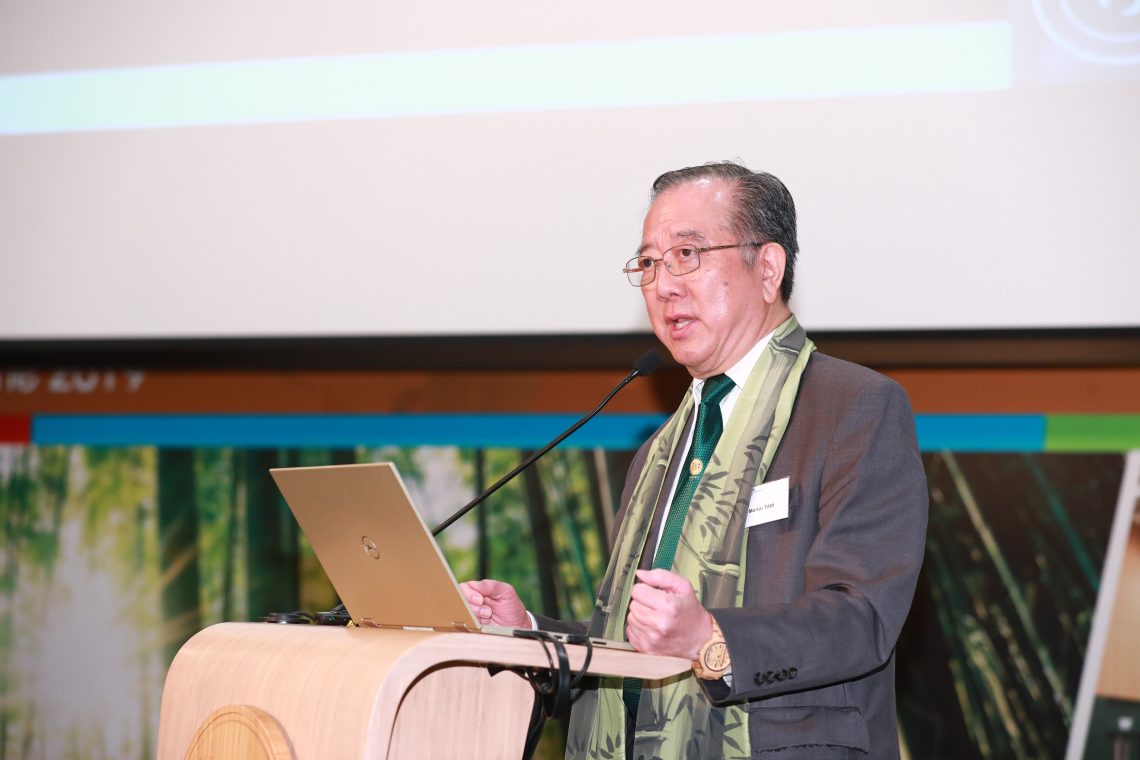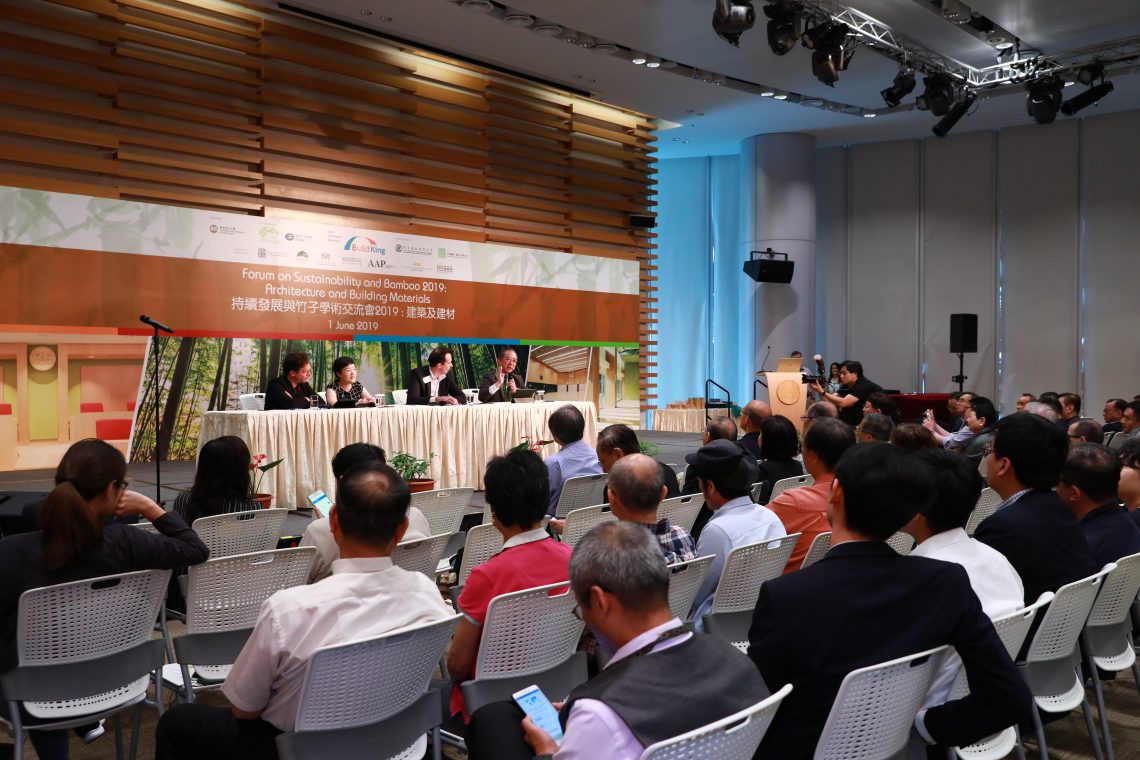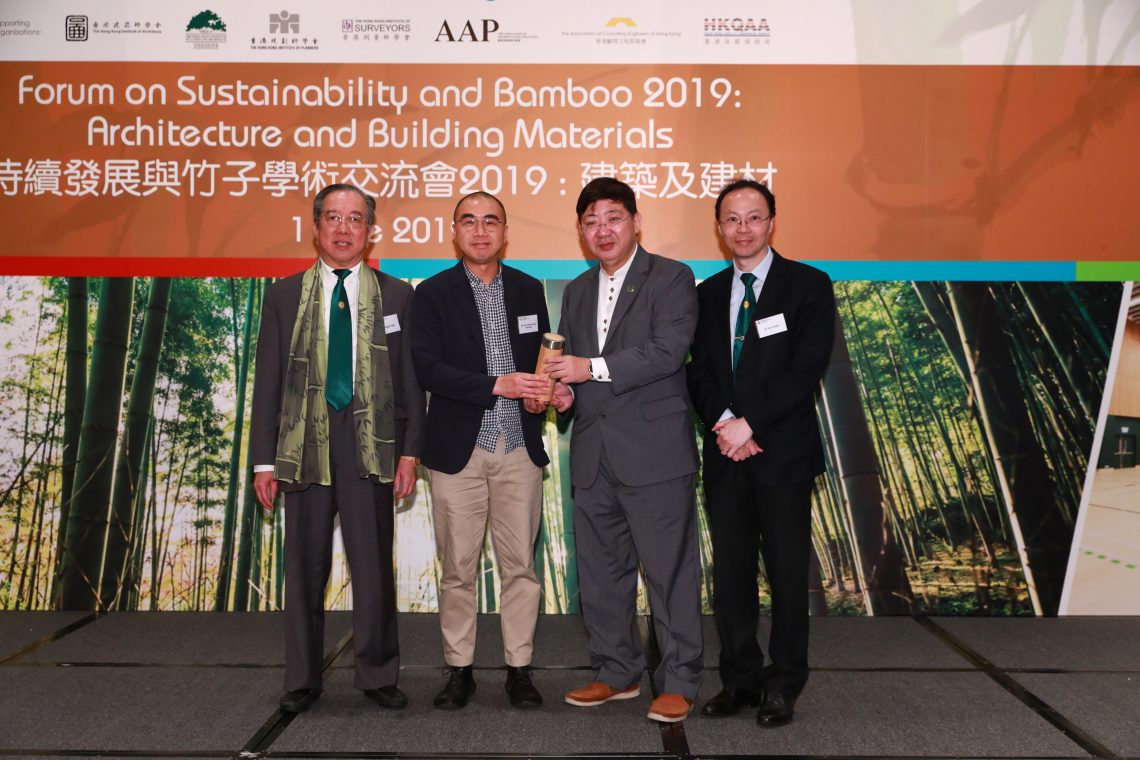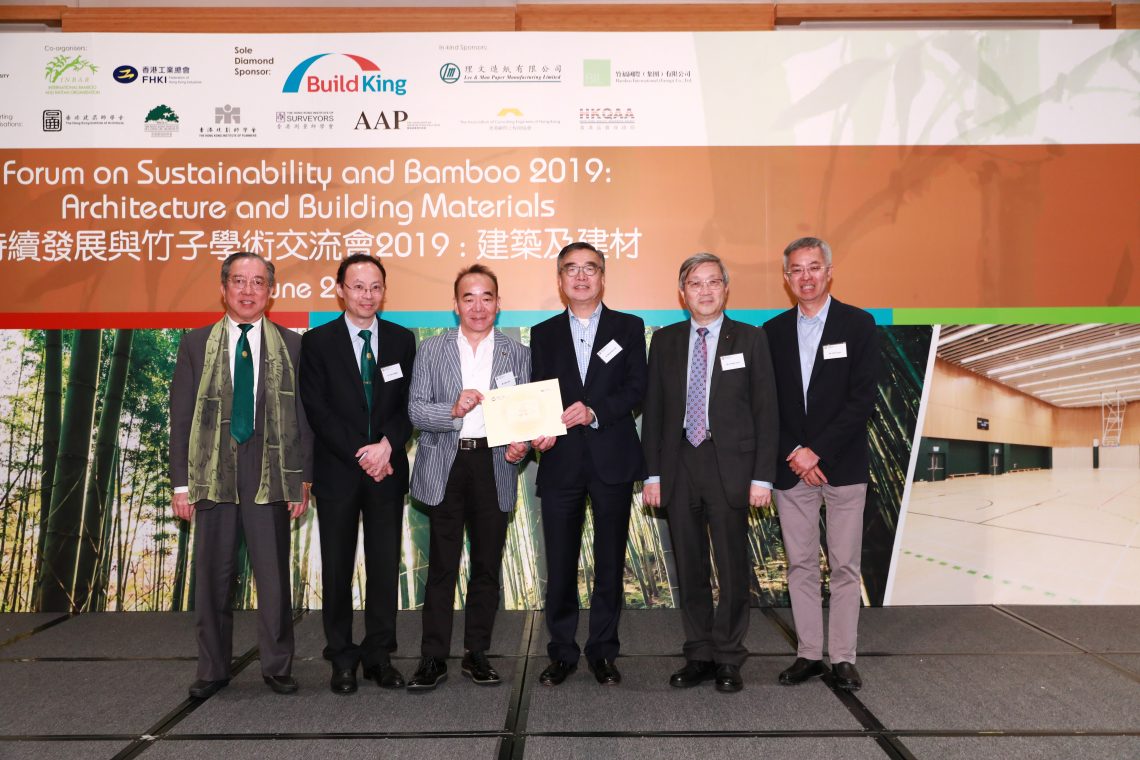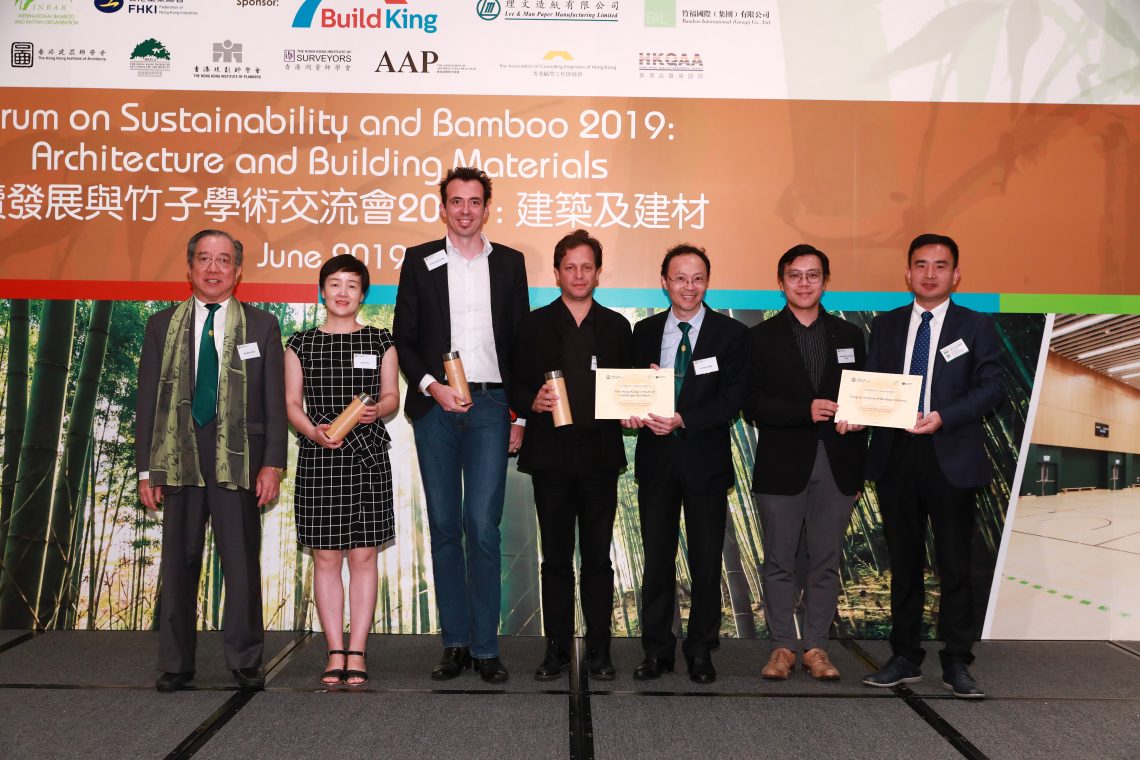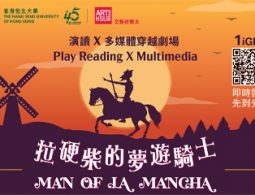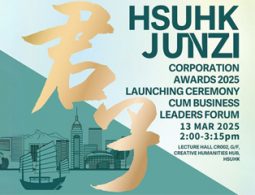1 June 2019
The Hang Seng University of Hong Kong (HSUHK) has been putting emphasis on sustainable development and extensively applying bamboo, which grows rapidly and reduces carbon dioxide, as the construction material for building a green campus. With the aims to raise the awareness on the idea of sustainable development and to share the advantages of using bamboo as building materials, HSUHK held the Forum on Sustainability and Bamboo 2019: Architecture and Building Materials on 1 June 2019, and invited field experts to share their insights. The Forum was officiated by the Honourable Tony Tse Wai-chuen, Legislative Council Member of HKSAR (Functional Constituency – Architectural, Surveying, Planning and Landscape).
The Forum was joined by keynote speakers Professor Lu Wen-ming, Deputy Director General of International Bamboo and Rattan Organisation (INBAR); and Ms Li Xiao-hua, Deputy Director General and Senior Engineer of International Centre for Bamboo and Rattan (ICBR); moderator Mr Martin Tam, Governor of HSUHK, Chairman of Federation of Hong Kong Industries – Bamboo Industry Committee (FHKI-BIC) and Task Force Expert Member – Bamboo Construction of INBAR; guest speakers Mr Mauricio Cardenas Laverde, Founder of Studio Cardenas Conscious Design; Professor Kristof Crolla, Assistant Professor of School of Architecture of The Chinese University of Hong Kong (CUHK); and Ms Liu Ke-wei, Co-ordinator of Global Bamboo Construction Programme of INBAR. The Forum attracted some 300 participants comprising the University management, staff and students of HSUHK, members from academia, business sectors, higher education institutions and secondary schools.
Professor Simon S M Ho, President of HSUHK, stated in his welcome address that the Forum aimed at bringing together experts, academia, industrialists and practitioners from around the world to share knowledge and experience on the roles of green buildings in sustainability and the significance of bamboo applications, and to pass the torch of these concepts to younger generations. As a liberal-arts-oriented university and one of the foremost advocates for green campus in the region, HSUHK always upheld the principle of sustainability in its educational activities and campus development. Being the first higher education institution in Hong Kong receiving the “Platinum” rating of BEAM Plus certification from the Hong Kong Green Building Council for all of its new buildings, greenery, bamboos in particular, had been planted around the campus and bamboo material was used extensively, such as floorings, wall panels, handrails and furniture, etc. Bamboo signified “Junzi” in traditional Chinese culture, had symbolic meaning of integrity, resilience, resoluteness and humility that he hoped HSUHK students would be able to manifest and HSUHK would become a “Junzi university”.
The Honourable Tony Tse shared in his speech that, “Much has been written about the importance of promoting sustainable development and renewable materials as the core values of modern and responsible society. It is easier said than done. HSUHK has been demonstrating to the industries on the application of the fastest-growing and environmental-friendly bamboo on its campus. To promote the wider uses of bamboo in building and construction industry, it is important that Government should adopt a much more proactive role to facilitate stakeholders to come up with innovative and bright ideas, and to join hands to work towards solutions for a more environmental-friendly and sustainable city.”
Speakers shared with audience the global industry of bamboo construction and manufacturing and the contemporary bamboo architectural development. In Professor Lu Wen-ming’s keynote speech “Opportunities and Challenges for the Development of Global Bamboo Construction Industry”, he mentioned that bamboo being one of renewable natural resources, its forest area increased by 3% annually. The increasing demand of sustainable construction materials from around the world due to global climate change had brought opportunities for the bamboo industry. On the other hand, the lack of understanding by the general public, experts and technical training also brought challenges to the industry.
Ms Li Xiao-hua mentioned in her speech that bamboo could be used to produce around 10,000 kinds of produces, such as furniture, electronic products, etc; and China, as the “Bamboo Empire”, exported a large quantity of bamboo products to over 30 countries. Bamboo as a new and popular green product would play an important role in future economic development.
Mr Mauricio Cardenas Laverde shared with audience the achievement of sustainable development through innovative applications of bamboo on structure and design of buildings. He mentioned that bamboo as a kind of environmental-friendly building material had relatively more advantages. For example, bamboo could be harvested within one to five years while other hard woods would need 40 years; it generated 35% more oxygen than other similar kinds of hard woods; the bamboo trunks could be directly used without additional industrial processes resulting in less carbon footprint, etc.
Professor Kristof Crolla shared his experience of producing the Bamboo Pavilion at Zero Carbon Building in Kowloon Bay. He applied traditional scaffolding techniques on its design and used bamboo trunks to build the Bamboo Pavilion. He also mentioned that bamboo construction should not only be used in temporary scaffolding, but also in permanent building structure.
Ms Liu Ke-wei showed different examples of bamboo applications as building materials around the world, such as hotels, schools, roads, etc and stated that over 60 among 1,642 bamboo species had been used in construction for its high resistant and anti-bending levels. She hoped to change the public’s concept of bamboo application and further promote bamboo industry in architecture and construction through research and training.
Mr Martin Tam emphasised the important role of bamboo in resisting global warming. Bamboo not only generated more oxygen than any other woods, its roots remained in the soil even after harvested, thus reducing soil erosion and retaining water in the soil. Besides, bamboo could be a substitute for fossil fuel; as well as fertiliser which restored and improved soil fertility. He hoped that more bamboo species could be grown in Hong Kong and more bamboo elements could be applied to building construction in future.
Speakers and audience had a fruitful Q&A session on issues of exploring the global bamboo industry and its further development in Hong Kong.
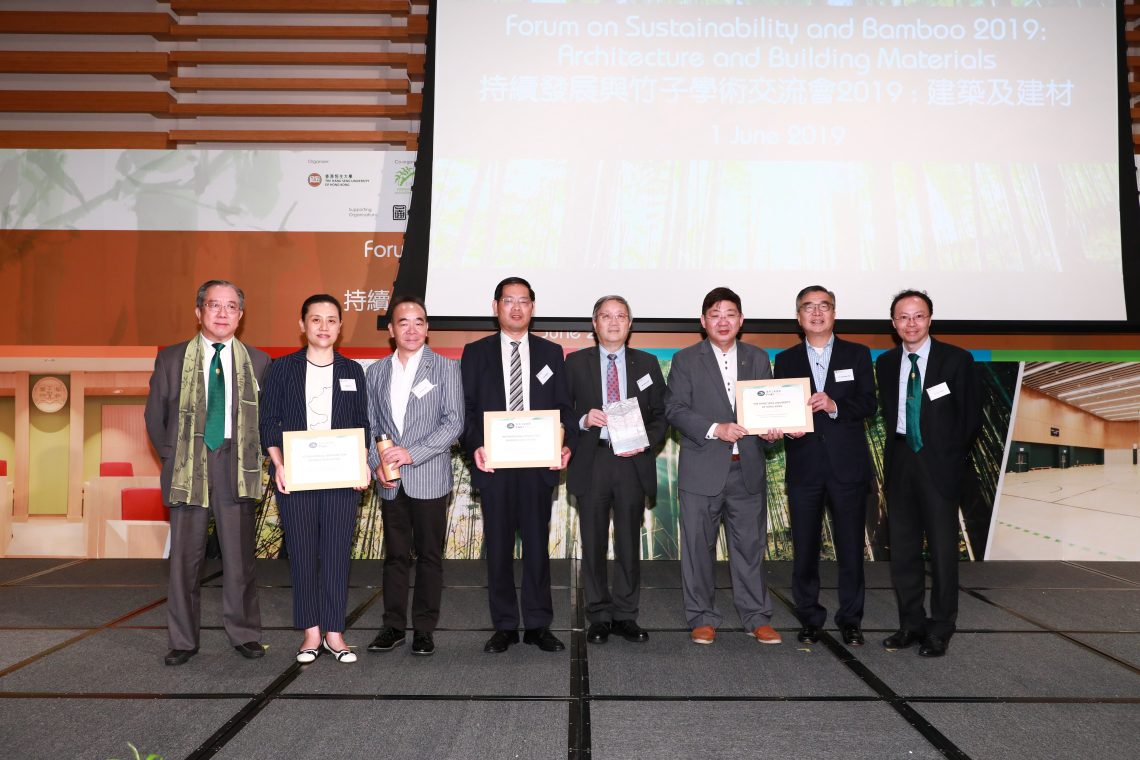
Group photo of the Forum Organiser HSUHK, Co-organisers INBAR, FHKI-BIC and ICBR.

